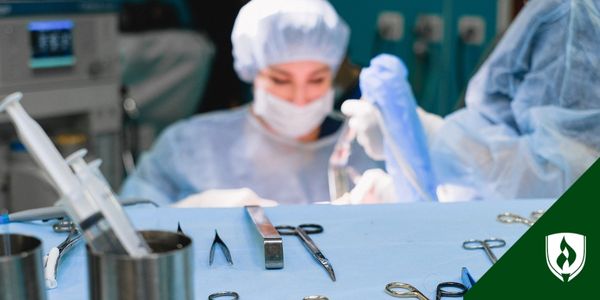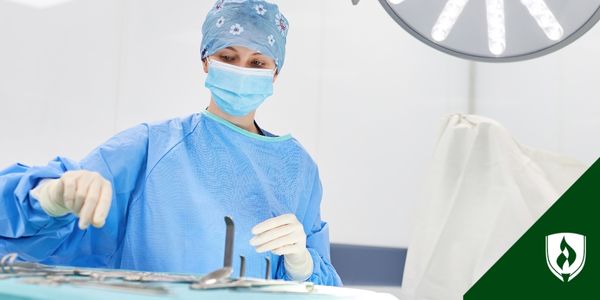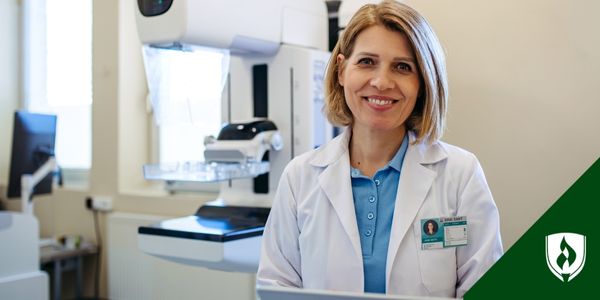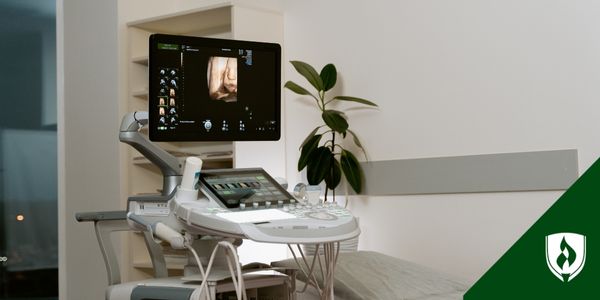What’s the Difference Between Medical Administrative Assistant vs. Medical Assistant?
By Staff Writer on 09/05/2024

The healthcare industry relies on many key players to keep things running smoothly. Among these are medical administrative assistants and medical assistants. Although their titles might seem alike, their roles differ significantly in education, focus and career prospects.
When considering a career in healthcare, understanding the differences between medical administrative assistant vs. medical assistant can help you choose the right educational path and align your career goals with the role that best suits your interests and skills. Whether you’re drawn to the organization of office tasks or the hands-on aspect of patient care, knowing these distinctions can guide you toward a fulfilling career.
Educational pathways comparison
The roles of medical administrative assistants, also known as medical office assistants, and medical assistants are more essential than ever. These professionals are key to keeping medical offices running smoothly, each handling different aspects of patient care and office management. While their duties may overlap at times, each role brings a specific set of responsibilities that support both the administrative and clinical sides of healthcare.
Formal education is required for both roles
If you’re aiming to become a medical administrative assistant or medical assistant, you’ll typically need some formal education. Most positions require a high school diploma or equivalent, along with some on-the-job training. However, completing a certificate program in medical office administration, or obtaining a certificate or associate degree in medical assisting, or a related field provides specialized knowledge and may improve job prospects.
Community colleges and vocational schools offer programs that teach essential skills like medical terminology, office management and medical billing and coding. These programs include classroom learning and provide practical training through internships, giving you hands-on experience in the field. Completing a formal education program can enhance your qualifications, make you more competitive in the job market and provide opportunities for certification, which some employers prefer.
Rasmussen University’s Medical Administrative Assistant Certificate program and Healthcare Associate’s -Medical Administrative Assistant Specialization degree programs are not designed to prepare graduates for any state-issued professional license or certification and have not been approved by any state professional licensing agency.1
Medical administrative assistants need knowledge of medical billing and coding
A medical office assistant (another term for medical administrative assistant) typically needs training in office management, medical billing and medical coding. These professionals play an important role in keeping the office organized and running smoothly by scheduling appointments, managing supplies, handling patient records and billing issues, and answering phone calls.
They are well-versed in the complex world of insurance claims and reimbursement processes. By accurately documenting and coding medical procedures, they ensure that healthcare providers are properly compensated for their services, while also navigating the intricacies of insurance policies on behalf of patients.
Aspiring medical administrative assistants might consider specialized courses in healthcare management, medical office technology and electronic health records management. These courses can deepen your understanding of the healthcare industry and the technological tools used in medical settings, potentially making you a valuable asset in healthcare facilities.
Medical assistants may build skills through on-the-job experience
Medical assistants need a solid understanding of both clinical and administrative tasks, covering areas such as anatomy, physiology, medical ethics, pharmacology, and clinical procedures. By pursuing formal education, clinical medical assistants can enhance their proficiency and broaden their scope of responsibilities in medical settings.
For those aiming to do clinical medical assisting, elective courses in medical coding, phlebotomy and patient care techniques can further enhance your capabilities and broaden your job opportunities.
Understanding medical coding principles, mastering blood-drawing techniques and honing patient care skills can make you more versatile and adaptable in various clinical settings.
Focus area differences
The main difference between medical administrative assistants and medical assistants is their focus.
Medical administrative assistants focus on clerical duties
Medical administrative assistants often act as the first point of contact for patients ensuring that the administrative side of the healthcare facility runs efficiently. An administrative medical assistant handles tasks that keep the office organized. You’ll typically need great attention to detail, strong organizational skills and effective communication to excel in this role.
If you’re inspired by the administrative side of healthcare, you might want to take the next step. Learn how to become a medical administrator and start planning your career path.
Medical assistants work in a greater medical capacity
Conversely, if you choose to become a medical assistant, you may be working in a more clinical capacity. As a clinical medical assistant, your duties may include taking medical histories, recording vital signs, preparing patients for examinations and assisting physicians during procedures. Medical assistants typically focus on clinical tasks such as taking vital signs, administering vaccines and assisting with patient education.
They may also be responsible for collecting and preparing laboratory specimens, administering medications as directed and instructing patients about medications or special diets. Compassion, empathy and the ability to work well with others are important qualities for success in this role.
Direct patient care vs. administrative tasks
It’s important to note that while medical administrative assistants primarily focus on the organizational and clerical aspects of healthcare facilities, medical assistants have a more hands-on role in patient care.
Medical assistants work closely with patients to provide direct care, support physicians during examinations and procedures and ensure that patients feel comfortable and informed throughout their medical visits.
Career pathways and specialization opportunities
The career paths of both medical administrative assistants and medical assistants offer a variety of opportunities for growth and specialization. Medical administrative assistants can advance their careers by specializing in medical coding and billing, healthcare management, or electronic health records management.
Advancement or specialization in the positions of medical administrative assistants and medical assistants may require additional education or work experience. It is important to check with employers regarding requirements to advance or specialize in these occupations.
Medical assistants also have numerous pathways for career development. They may choose to expand their skill set by pursuing further education to become licensed practical nurses (LPNs) or registered nurses (RNs), which allows them to take on different clinical responsibilities.
Specializing in fields like phlebotomy, cardiology, podiatry, or optometry can enhance their job opportunities and make them more versatile in various healthcare environments. Medical assistants can work in family practices, specialty clinics, hospitals, and outpatient care centers, where their roles are crucial to patient care.
Specialization in such fields as phlebotomy, cardiology, podiatry, or optometry may require different education or work experience depending on where you go. It is important to check with employers regarding requirements to advance or specialize in these named occupations.
Factors such as an aging population, advancements in medical technology, and the increasing complexity of healthcare regulations are driving this demand for skilled professionals in both of these roles.
Research and development roles
If you have a penchant for research and development, the medical administrative assistant and medical assistant roles might offer unique opportunities to fulfill that curiosity. As a medical administrative assistant, you may find yourself assisting with research projects by gathering data and contributing to the analysis of healthcare trends. Your involvement in these activities can help organizations make informed decisions and improve patient care.
Within the realm of research and development in the healthcare industry, there is a growing emphasis on technological advancements. Medical administrative assistants are increasingly utilizing electronic health records (EHR) systems to streamline data collection processes. By mastering these digital tools, professionals in this role can contribute to the seamless integration of technology in healthcare.
On the other hand, many medical assistants are also leveraging their roles to explore interdisciplinary collaborations in research and development. They work closely with diverse healthcare specialists, such as nurses, pharmacists and laboratory technicians, to gather comprehensive data and insights for research projects.
This collaborative approach not only enriches the research process but also fosters a multidisciplinary perspective in addressing healthcare challenges.
Impact on the healthcare industry
While medical administrative assistants may not have direct involvement in clinical care like medical assistants do, their contributions are vital to the smooth operation of healthcare facilities. Their attention to detail, organizational skills and ability to provide excellent customer service make them an essential part of the industry.
Medical assistants often serve as the bridge between patients and physicians. Their hands-on involvement in clinical procedures, coupled with their ability to provide compassionate care, directly impacts the quality of patient experiences.
Both medical administrative assistants and medical assistants play unique roles in healthcare, with different educational paths, focuses, and career opportunities. Think about what you enjoy, your skills and your career goals to decide which path is right for you. Explore your options and choose a career that will make a difference in the healthcare industry and in the lives of patients.
Finding your role in healthcare: administrative vs. clinical
As you consider your next steps in the healthcare field, it’s important to align your interests and skills with the right career path. Whether you’re drawn to the organizational side of healthcare as a medical administrative assistant or prefer the hands-on clinical work of a medical assistant, both roles offer meaningful opportunities to contribute to patient care and the smooth operation of healthcare facilities.
By understanding the distinct educational pathways and specializations available, you can make an informed decision that not only meets your career goals but also fulfills your passion for making a difference in the healthcare industry.
If medical assisting sounds right for you, check out How to Become a Medical Assistant: The Steps You Can't Ignore.
If medical administration is more your speed, check out What is Medical Administration? Exploring the Essentials.
1Rasmussen University’s Medical Administrative Assistant Certificate program and Healthcare Associate’s -Medical Administrative Assistant Specialization degree programs are not designed to prepare graduates for any state-issued professional license or certification and have not been approved by any state professional licensing agency. Each state determines its own requirements for licensure or certification as a medical assistant. In many states, the minimum educational requirement is a high school diploma or equivalent, but employers may value educational attainment beyond high school level. Other eligibility requirements may apply, including experience working in allied health setting. Please check with state agencies in your state for further details




